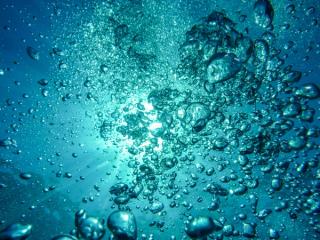
Cultural heritage: Indigenous and cultural heritage values driving sustainable development
by Flavia Kiperman
View post

Following on from the publication of the Environment Agency’s (EA) suite of emerging techniques guidance for hydrogen production in March 2024 [1], Geopura Ltd (Geopura) has been successful in having the first bespoke environmental permit issued for an electrolysis plant, issued in August 2024.[2]
So, what can we learn as a result of the EA’s determination and what are the implications for environmental permit applications involving hydrogen production by electrolysis? In this article, I summarise and highlight key learnings that can be taken away from this determination.
The permit issued by the EA requires the operator to provide a summary report of the environmental management system (EMS) and accident management plan prior to commencement of operations, copies of which will need to be made available for inspection should they be requested. Emissions streams will also need to be identified and quantified in an emissions inventory within the EMS.
The improvement programme requirements are for the operator to sample and monitor effluent discharge from reverse osmosis; to submit within six months a plan for a leak detection and repair (LDAR) programme and proposals for monitoring techniques used to detect and quantify fugitive emissions of hydrogen; and to quantify and report any venting emissions of hydrogen.
Monitoring requirements, such as emission limits and reporting requirements, have been determined for process effluent discharge to water for several parameters as per the European Commission’s Best Available Techniques (BAT) Reference Document for Common Waste Water and Waste Gas Treatment/Management Systems in the Chemical Sector.[3] This includes chemical oxygen demand (COD), total suspended solids (TSS), total nitrogen (TN), total phosphorous (TP), chromium, copper, nickel, and zinc. Geopura has been set an improvement condition to monitor for a period of 12 months to validate the risk assessment they submitted in support of the application and determine whether the annual mass emission of these substances are above thresholds stated in the aforementioned Best Available Techniques Reference Document. If not, then the permit has been drafted in such a way that the emission limits do not apply. No emission limit has been set for uncontaminated surface water runoff via attenuation pond.
The EA gave consideration to nutrient neutrality requirements in their determination. It did not present an issue for Geopura due to no chemical addition as part of the water treatment process and all nutrients being below significant thresholds, but is a matter to bear in mind as part of assessments for environmental permit applications.
The venting of hydrogen and oxygen has been accepted by the EA, with hydrogen venting being demonstrated to be of sufficiently low volume to not necessitate flaring or recovery. SLR notes that Geopura stated hydrogen emissions to be less than 100kg/yr which is significantly less than we would typically expect associated with continuous emissions from purification packages, instrumentation plus hydrogen emissions from start-up / shutdown, however.
A monitoring frequency and annual reporting requirement has been set for its venting and for fugitive emissions of hydrogen from the electrolysis process (including hydrogen purification and storage).
Using Geopura’s issued permit as an example, if the application was submitted in April 2023 according to the date on their application forms, it would make it just short of 17.5 months from submission date to permit issue. The application was duly made on 5th March 2024 which means it took 5.5 months for the EA to determine the application from this point. Submitting applications with plenty of time to allow for the delay in determinations is important to consider as part of a project’s plan.
Based on this determination, and a review of the emerging techniques, it is evident that emphasis will be placed by the EA on the consideration, monitoring, and reporting of energy, raw material, water use, noise minimisation, and emissions to the environment, including the quantification of hydrogen emissions under normal and ‘other than normal conditions’. Therefore, a detailed application assessing resource efficiency, application of best available techniques, a H1 surface water risk assessment, an amenity risk assessment, an accident risk assessment and management plan, and a noise impact assessment (depending on the location and design of the installation) will typically be required. Enhanced pre-application discussions with the EA are highly recommended to agree on the scope of assessments and site-specific issues.
For more information on environmental permitting for hydrogen production, watch our webinar.
If you need any consulting support regarding hydrogen production installations, please get in touch with us. Our experts can help with the following and more:
------------------------------------
References
[1] https://www.gov.uk/guidance/hydrogen-production-by-electrolysis-of-water-emerging-techniques
[3] https://eippcb.jrc.ec.europa.eu/sites/default/files/2019-11/CWW_Bref_2016_published.pdf

by Flavia Kiperman

by Jasper Schrijvers , Matthew Hoare

by Clodagh Connolly, Nicola Inge, Andres Schottlaender